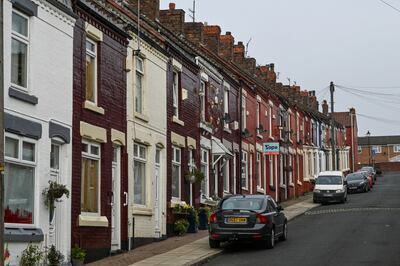Fewer people in England and Wales now own their home than in 2021, in a national shift towards renting, according to newly-released data.
Overall, the majority of people still owned the home they lived in, at 62.5 per cent, or 15.5 million households, the 2021 census figures for England and Wales showed.
But the number was down from 64.3 per cent -15.0 million households — in 2011.
Meanwhile there was a rise in the number of households renting.
The number was up to 37.3 per cent — or 9.3 million households — in 2021, from 34.3 per cent — 8 million households — in 2011.
Polly Neate, chief executive of Shelter, said: “Predictably the number of private rented households in England has skyrocketed since 2011.
“Despite this, regulation of the sector stagnates. Every day our emergency helpline hears from private renters paying through the nose for damp, mouldy homes, and families too scared to complain for fear they'll be kicked out.”
She added: “The only lasting solution to our housing emergency is building more social homes.”
The proportion of households living rent-free declined from 1.4 per cent (315,000) in 2011, to 0.1 per cent (33,000) in 2021.
Census data also showed about 3.2 million people in England and Wales stayed at a second address for more than 30 days in 2021, probably in part due to the Covid-19 pandemic.
Those spending time at second properties, such as holiday homes, students' home addresses, and partners' addresses, equated to 5.3 per cent of the population, according to the Office for National Statistics (ONS).
The percentage of people using a second address has risen since 2011, when 2.9 million people, or 5.2 per cent of the population, did so.
About 2.5 million usual residents in England and Wales have a second address within the UK and 736,000 have one outside it, according to the latest figures.
The most common types of second address were another parent or guardian's address, which would have been selected for children whose parents lived apart, used by 1.1 million; students' home addresses, used by 655,000; and holiday homes, used by 447,000.
The ONS highlighted the potential impacts of the coronavirus pandemic on the figures.
For example, students may have been more likely to be staying at their family home for the whole academic year, rather than using a term-time address.

In 2011, 715,000 people had students' home addresses as a second address, and the decline probably reflects a pandemic effect, the ONS said.
The proportion of people using holiday homes has remained broadly stable since 2011, rising slightly from 426,000 to 447,000.
The number of people using an armed forces base as a second address has more than halved, from 73,000 in 2011 to 33,000 in 2021.
There was also a decrease in the number of people who used another address when working away from home, from 253,000 in 2011 to 189,000 in 2021.
For the first time, the question also included an option for the use of a partner's address.
In 2021, 294,000 people reported using this type of second address.
A slightly higher percentage of residents in England used a second address, at 5.4 per cent, than in Wales, at 5.2 per cent.
Within England, London, at 6 per cent, and the South-West, at 5.9 per cent, had the highest percentages of usual residents who used a second address, while the West Midlands, at 4.5 per cent, had the lowest.
The local authorities with the highest percentage of people who used a second address were Oxford, at 15.6 per cent, Cambridge, at 14.1 per cent, and Exeter, at 13.5 per cent.
The high percentage of people with second addresses likely reflects students with both a term-time address and a non-term-time address,the ONS said.
The data also showed across England and Wales, that 77.9 per cent, or 19.3 million households, were living in a house or bungalow, while 21.7 per cent, or 5.4 million, lived in flats, maisonettes or apartments, and 0.4 per cent, or 104,000, lived in a caravan, or other mobile or temporary structure, in 2021.
The proportion of households living in a flat, maisonette or apartment increased from 21 per cent, or 4.9 million households, in 2011.







